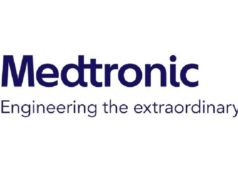
IMRIS, on the 19 June 2013 announced that Yale-New Haven Hospital, New Haven, USA, neurosurgeons have confirmed effective chemotherapy delivery in treating eye cancer using intraoperative imaging in the VISIUS Surgical Theatre.
According to a press release, selective intra-arterial chemotherapy is a growing strategy for treating retinoblastomas. The technique allows for delivery of an increased concentration of the drug directly to the tumour and reduces the need to use systemically delivered chemotherapy which can cause significant side effects.
Using the VISIUS surgical theatre with iMRI the treatment procedure is a novel approach, according to the company, to this strategy and permitted the Yale neurosurgeons to confirm successful delivery of chemotherapy at the tumour site.
“Combining the intraoperative magnetic resonance imaging (MRI) with biplane angiography has allowed us to rapidly acquire an intraoperative MRI and indirectly confirm that the chemotherapy reached the site of interest,” said Ketan R Bulsara, associate professor of Neurosurgery and Director of Neuroendovascular and Skull-Base Surgery at Yale School of Medicine, USA.
For the retinoblastoma cases, the Yale-New Haven setup of the surgical theatre, according to the release, allowed Bulsara to use angiography to guide the drug delivery catheter from the entry point at the femoral artery to the ophthalmic artery. The surgeon confirmed that the chemotherapy reached the site of interest using iMRI in a single procedural space.
A case report on the initial use of iMRI was a seven-month-old infant, which was published in the Journal of NeuroInterventional Surgery in November 2012. According to a press release, multiple patients have been treated since then, and in these cases complete tumour remission has been seen so far, according to Bulsara. He added that this has avoided the need to remove the eye or the need for systemic chemotherapy for these patients.
During the procedures, iMRI scans were obtained within 15 minutes after drug delivery. “The iMRI provided enhanced visualisation of the tumour and the space around the eye using gadolinium as an indirect marker,” said Bulsara.
In the first case, after each of three treatments—spaced four to six weeks apart—imaging showed significant tumour reduction in the child’s eye until it was all gone with no major systemic side effects observed. “So far there has not been a need to adjust the delivery method because we haven’t seen evidence of the therapy going elsewhere,” Bulsara said.
Patients selected for this method, he noted, undergo an extensive evaluation by a Yale-New Haven Hospital team that includes Miguel Materin (ophthalmologist), Farzana Parshanker (oncologist) and Jeremy Asnes (paediatric cardiologist and co-surgeon).
Bulsara, a neurosurgeon with dual fellowship training in skull-based cerebrovascular microsurgery and endovascular neurosurgery, believes that physicians are only beginning to see the potential advantages of having all these capabilities in a single room.













